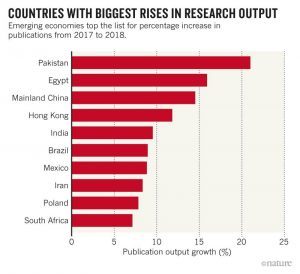
Mark Lilla in the NY Review of Books:
Whatever one thinks of these conservative ideas about society and the economy, they form a coherent worldview. The same cannot really be said about the establishment left and right in Europe today. The left opposes the uncontrolled fluidity of the global economy and wants to rein it in on behalf of workers, while it celebrates immigration, multiculturalism, and fluid gender roles that large numbers of workers reject. The establishment right reverses those positions, denouncing the free circulation of people for destabilizing society, while promoting the free circulation of capital, which does exactly that. These French conservatives criticize uncontrolled fluidity in both its neoliberal and cosmopolitan forms.
But what exactly do they propose instead? Like Marxists in the past who were vague about what communism would actually entail, they seem less concerned with defining the order they have in mind than with working to establish it. Though they are only a small group with no popular following, they are already asking themselves grand strategic questions. (The point of little magazines is to think big in them.) Could one restore organic connections between individuals and families, families and nations, nations and civilization? If so, how? Through direct political action? By seeking political power directly? Or by finding a way to slowly transform Western culture from within, as a prelude to establishing a new politics? Most of these writers think they need to change minds first. That is why they can’t seem to get through an article, or even a meal, without mentioning Antonio Gramsci.
More here.

 Jeffrey J. Williams interviews Bruce Robbins over at the LA Review of Books:
Jeffrey J. Williams interviews Bruce Robbins over at the LA Review of Books:
 Richard Marshall interviews Sander Verhaegh in 3:AM Magazine:
Richard Marshall interviews Sander Verhaegh in 3:AM Magazine: Dylan Riler in the New Left Review:
Dylan Riler in the New Left Review: Everything is formed by habit. The crow’s feet that come from squinting or laughter, the crease in a treasured and oft-opened letter, the ruts worn in a path frequently traveled—all are created by repeatedly performing the same action. Even neurons are formed by habit. When continuously exposed to a fixed stimulus, neurons become steadily less sensitive to that stimulus—until they eventually stop responding to it altogether. Anything that’s habitually encountered—the landscape of a daily commute, storefronts passed on a walk to the bus stop, photographs arranged on a mantelpiece—tends toward invisibility. The more we see a thing, the less we see it. Familiarity breeds neglect. Once perception settles into a comfortable pattern, we fall asleep to it. Only when the pattern is broken do we notice there is a pattern at all. The chains of mental habit are too weak to be felt until they are too strong to be broken, to paraphrase Samuel Johnson. Wit, whether visual or verbal, can make the commonplace uncommon again by breaking the habits that render perception routine. We tend to define the quality of wit as merely being deft with a clever comeback. But true wit is richer, cannier, more riddling. And the best of it is often based on a biological phenomenon called supernormal stimuli.
Everything is formed by habit. The crow’s feet that come from squinting or laughter, the crease in a treasured and oft-opened letter, the ruts worn in a path frequently traveled—all are created by repeatedly performing the same action. Even neurons are formed by habit. When continuously exposed to a fixed stimulus, neurons become steadily less sensitive to that stimulus—until they eventually stop responding to it altogether. Anything that’s habitually encountered—the landscape of a daily commute, storefronts passed on a walk to the bus stop, photographs arranged on a mantelpiece—tends toward invisibility. The more we see a thing, the less we see it. Familiarity breeds neglect. Once perception settles into a comfortable pattern, we fall asleep to it. Only when the pattern is broken do we notice there is a pattern at all. The chains of mental habit are too weak to be felt until they are too strong to be broken, to paraphrase Samuel Johnson. Wit, whether visual or verbal, can make the commonplace uncommon again by breaking the habits that render perception routine. We tend to define the quality of wit as merely being deft with a clever comeback. But true wit is richer, cannier, more riddling. And the best of it is often based on a biological phenomenon called supernormal stimuli. Emerging economies showed some of the largest increases in research output in 2018, according to estimates from the publishing-services company Clarivate Analytics. Egypt and Pakistan topped the list in percentage terms, with rises of 21% and 15.9%, respectively. China’s publications rose by about 15%, and India, Brazil, Mexico and Iran all saw their output grow by more than 8% compared with 2017 (See ‘Countries with biggest rises in research output’). Globally, research output rose by around 5% in 2018, to an estimated 1,620,731 papers listed in a vast science-citation database Web of Science, the highest ever (see ‘Research output rose again in 2018’). This diversification of players in science is a phenomenal success, says Caroline Wagner, a science and technology policy analyst at Ohio State University, and a former adviser to the US government. “In 1980, only 5 countries did 90% of all science — the United States, the United Kingdom, France, Germany and Japan,” she says. “Now there are 20 countries within the top producing group.”
Emerging economies showed some of the largest increases in research output in 2018, according to estimates from the publishing-services company Clarivate Analytics. Egypt and Pakistan topped the list in percentage terms, with rises of 21% and 15.9%, respectively. China’s publications rose by about 15%, and India, Brazil, Mexico and Iran all saw their output grow by more than 8% compared with 2017 (See ‘Countries with biggest rises in research output’). Globally, research output rose by around 5% in 2018, to an estimated 1,620,731 papers listed in a vast science-citation database Web of Science, the highest ever (see ‘Research output rose again in 2018’). This diversification of players in science is a phenomenal success, says Caroline Wagner, a science and technology policy analyst at Ohio State University, and a former adviser to the US government. “In 1980, only 5 countries did 90% of all science — the United States, the United Kingdom, France, Germany and Japan,” she says. “Now there are 20 countries within the top producing group.” Pablo Calvi in The Believer:
Pablo Calvi in The Believer:
 Fara Dabhoiwala in The Guardian:
Fara Dabhoiwala in The Guardian: An interview with Adam Tooze in Jacobin:
An interview with Adam Tooze in Jacobin: Sheri Berman in Dissent:
Sheri Berman in Dissent: His book is a lie, a black, infernal creation of a twisted, distorted mind.” It was a Democratic representative from Oklahoma who gave this verdict of The Grapes of Wrath, John Steinbeck’s chronicle of migrants leaving the Dust Bowl for California. Disdained by the political elite and much of the literary set, it was nonetheless the best-selling book of 1939. Today’s parallels with the 1930s give Steinbeck’s work renewed urgency. He writes about farm labourers, shopkeepers and the denizens of village taverns – the kinds of people who, before the enormous political upheaval of 2016, the chattering classes barely remembered. In the age of Trump, mass-migration and the phenomenon of the ‘left behind’, Steinbeck’s work is just as relevant as when he wrote it. But more than that: reading Steinbeck fifty years after his death is the perfect antidote to the culture war that has gripped America.
His book is a lie, a black, infernal creation of a twisted, distorted mind.” It was a Democratic representative from Oklahoma who gave this verdict of The Grapes of Wrath, John Steinbeck’s chronicle of migrants leaving the Dust Bowl for California. Disdained by the political elite and much of the literary set, it was nonetheless the best-selling book of 1939. Today’s parallels with the 1930s give Steinbeck’s work renewed urgency. He writes about farm labourers, shopkeepers and the denizens of village taverns – the kinds of people who, before the enormous political upheaval of 2016, the chattering classes barely remembered. In the age of Trump, mass-migration and the phenomenon of the ‘left behind’, Steinbeck’s work is just as relevant as when he wrote it. But more than that: reading Steinbeck fifty years after his death is the perfect antidote to the culture war that has gripped America. Jan Mattlin was having what counts as a bad day in Kauniainen. He had driven to the town’s train station and found nowhere to park. Mildly piqued, he called the local newspaper to suggest a small article about the lack of parking spots. To Mr. Mattlin’s surprise, the editor put the story on the front page. “We have very few problems here,” recalled Mr. Mattlin, a partner at a private equity firm. “Maybe they didn’t have any other news available.” Such is the charmed life in Kauniainen (pronounced: COW-nee-AY-nen), a small and wealthy Finnish town that can lay claim to being the happiest place on the planet. Finland was
Jan Mattlin was having what counts as a bad day in Kauniainen. He had driven to the town’s train station and found nowhere to park. Mildly piqued, he called the local newspaper to suggest a small article about the lack of parking spots. To Mr. Mattlin’s surprise, the editor put the story on the front page. “We have very few problems here,” recalled Mr. Mattlin, a partner at a private equity firm. “Maybe they didn’t have any other news available.” Such is the charmed life in Kauniainen (pronounced: COW-nee-AY-nen), a small and wealthy Finnish town that can lay claim to being the happiest place on the planet. Finland was  In reviewing “Intimations of Ghalib”, a new translation of selected ghazals of the Urdu poet Ghalib by M. Shahid Alam, let it be said at the outset that translating classical Urdu ghazal into any language – possibly excepting Persian – is an almost impossible task, and translating Ghalib’s ghazals even more so. The use of symbolism, the aphoristic aspect of each couplet, the frequent play on words, and the packing of multiple meanings into a single verse are all too easy to lose in translation. And no Urdu poet used all these devices more pervasively and subtly than Ghalib, and even learned scholars can disagree strongly on the “correct” meaning of particular verses. As such, Alam set himself an impossible task, and the result is, among other things, a demonstration of this.
In reviewing “Intimations of Ghalib”, a new translation of selected ghazals of the Urdu poet Ghalib by M. Shahid Alam, let it be said at the outset that translating classical Urdu ghazal into any language – possibly excepting Persian – is an almost impossible task, and translating Ghalib’s ghazals even more so. The use of symbolism, the aphoristic aspect of each couplet, the frequent play on words, and the packing of multiple meanings into a single verse are all too easy to lose in translation. And no Urdu poet used all these devices more pervasively and subtly than Ghalib, and even learned scholars can disagree strongly on the “correct” meaning of particular verses. As such, Alam set himself an impossible task, and the result is, among other things, a demonstration of this.
 In 2018, Earth picked up about 40,000 metric tons of interplanetary material, mostly dust, much of it from comets. Earth lost around 96,250 metric tons of hydrogen and helium, the lightest elements, which escaped to outer space. Roughly 505,000 cubic kilometers of water fell on Earth’s surface as rain, snow, or other types of precipitation. Bristlecone pines, which can live for millennia, each gained perhaps a hundredth of an inch in diameter. Countless mayflies came and went. As of this writing, more than one hundred thirty-six million people were born in 2018, and more than fifty-seven million died.
In 2018, Earth picked up about 40,000 metric tons of interplanetary material, mostly dust, much of it from comets. Earth lost around 96,250 metric tons of hydrogen and helium, the lightest elements, which escaped to outer space. Roughly 505,000 cubic kilometers of water fell on Earth’s surface as rain, snow, or other types of precipitation. Bristlecone pines, which can live for millennia, each gained perhaps a hundredth of an inch in diameter. Countless mayflies came and went. As of this writing, more than one hundred thirty-six million people were born in 2018, and more than fifty-seven million died.